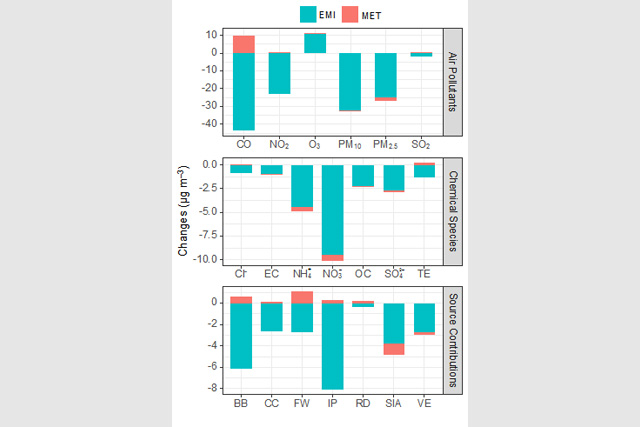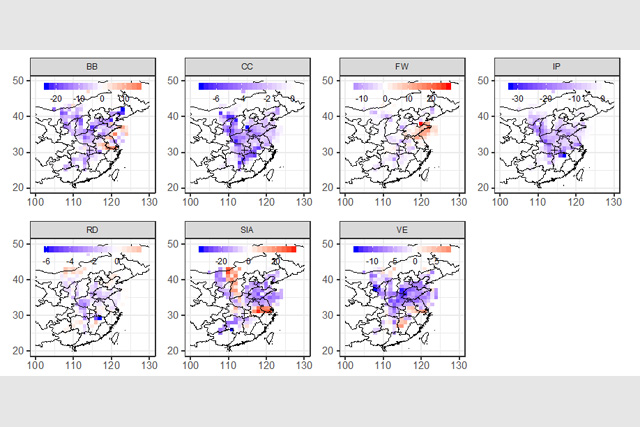CUG team led by Prof. KONG Shaofei of the School of Environmental Studies, and researchers from the Eco-Environmental Monitoring Centre of Hubei Province, the Research Centre for Complex Air Pollution of Hubei Province, Zhejiang University, China Meteorological Administration, and Nanjing University of Information Science and Technology published “Significant changes in the chemical compositions and sources of PM2.5 in Wuhan since the city lockdown as COVID-19” in Science of The Total Environment. The first author is doctoral students ZHENG Huang, and Prof. KONG is the corresponding author.
Wuhan was the first city to adopt the lockdown measures to prevent COVID-19 spreading, which improved the air quality accordingly. This study investigated the variations in chemical compositions, source contributions, and regional transport of fine particles (PM2.5) during January 23–February 22 of 2020, compared with the same period in 2019. The average mass concentration of PM2.5decreased from 72.9 μg m−3 (2019) to 45.9 μg m−3 (2020), by 27.0 μg m−3. It was predominantly contributed by the emission reduction (92.0%), retrieved from a random forest tree approach. The main chemical species of PM2.5 all decreased with the reductions ranging from 0.85 μg m−3 (chloride) to 9.86 μg m−3 (nitrate) (p< 0.01). Positive matrix factorization model indicated that the mass contributions of seven PM2.5 sources all decreased. However, their contribution percentages varied from −11.0% (industrial processes) to 8.70% (secondary inorganic aerosol). Source contributions of PM2.5 transported from potential geographical regions showed reductions with mean values ranging from 0.22 to 4.36 μg m−3. However, increased contributions of firework burning, secondary inorganic aerosol, road dust, and vehicle emissions from transboundary transport were observed. This study highlighted the complex and nonlinear response of chemical compositions and sources of PM2.5 to air pollution control measures, suggesting the importance of regional-joint control.

Changes of air pollutants, chemical species, and source contributions of PM2.5 between the study period in 2020 and 2019 due to emission (EMI) and meteorology (MET)

Differential concentration-weighted trajectory (DCWT, μg m−3 ) values of source contributions for the observational period in 2020 compared with those in 2019
This study highlighted that the lockdown measures not only reduced the mass concentrations of air pollutants and associated chemical compositions, but also modified the diurnal variation patterns of PM2.5 sources. Further researches should deeply investigate the emission reduction on atmospheric oxidation ability and secondary aerosol formation mechanisms.
Full Text: https://doi.org/10.1016/j.scitotenv.2020.140000